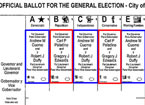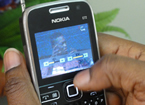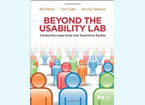(English) HCI for Peace: An Invitation to Positive Action

(English) Human-computer interaction (HCI) provides novel opportunities for user experience professionals to design technologies that promote specific human values such as peace. [Leia mais]
(English) Engaging with Mental Health: Opportunity for Collaboration

(English) Collaboration between human-computer interaction (HCI) and mental health professionals can play a valuable role in future research on mental health technologies. [Leia mais]
(English) Persuasion Invasion: Using Facebook for Behavioral Change

(English) Social media has the potential for generating positive behavior change by influencing us to adjust our behavior to align with that of our peers. [Leia mais]
(English) Voting in New York City: Why is Ballot Design so Hard to Get Right?

(English) There is movement toward reform and improved ballot design in New York. We need more user experience people getting involved with elections and civic life. [Leia mais]
(English) Accounting for Social Change in Design
(English) Designing for social change does not mean using design to change society. It means design that takes into account the fact that it will change society. [Leia mais]
(English) Ghana Calling: Dust, Multiple SIMs, and Music Sharing

(English) Everyday mobile phone use in Accra, Ghana, has some unique challenges, but it is similar to mobile phone use in other parts of the world. [Leia mais]
(English) Mobile Technology: Design for Social Change
(English) When designing mobile UIs for use in developing markets and we must adhere to the first rule of user experience design, “Know your users,” [Leia mais]
(English) Never Too Old: Incorporating Digital Technologies into the Lives of Older Persons

(English) We need to learn how older people use technology to determine when and how to implement accessibility features rather than always seeking a “special” solution. [Leia mais]
(English) A Design Method for BOP Users: Products for Social Innovation

(English) When developing products for 90 percent of the world, in order to create acceptable devices, designers need to resolve belief conflicts between themselves and target users. [Leia mais]
(English) Designing on Mars: Participatory Design and Training in Very Unfamiliar Environments

(English) Gathering information in an unfamiliar cultural context is time-consuming. Described here is the technique adopted by a team of the Madeira Interactive Technologies Institute (M-ITI) in response. [Leia mais]
(English) What’s News: Mommy, Can I Play with Your iPhone?

(English) The Woogie, a stuffed animal into which you can insert your iPhone, helps childproof your phone, however parents must monitor the content their children view. [Leia mais]
(English) Book Review: Of Testing and Techniques

(English) A review of Beyond the Usability Lab: Conducting Large-Scale Online User Experience Studies by Bill Albert, Tom Tullis, Donna Tedesco. This book is well-structured for practitioners of remote usability testing. [Leia mais]
(English) Editor’s Note: Designing for Social Change

(English) This issue’s theme of “Designing for Social Change” focuses on the challenge of UX design for constructive social change. [Leia mais]
(English) Rubes Cartoon: Floss Daily

(English) Cartoons from the wild and twisted world of Leigh Rubin, syndicated cartoonist. [Leia mais]


